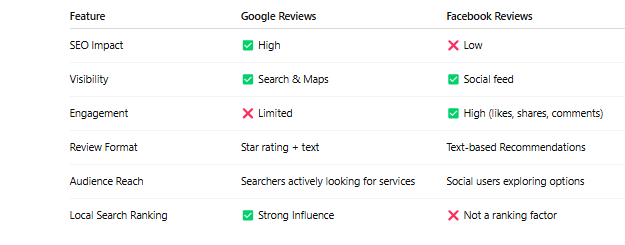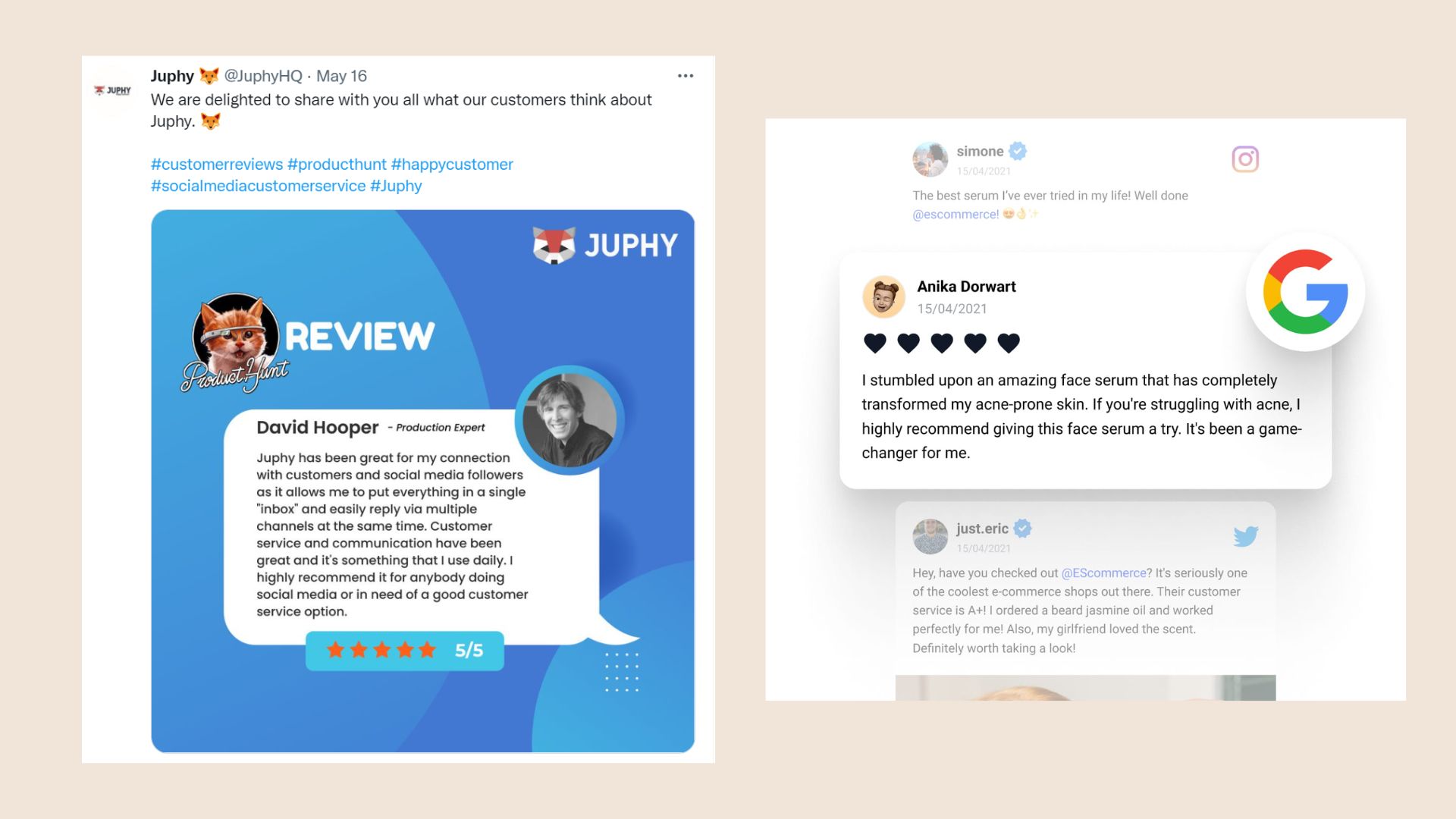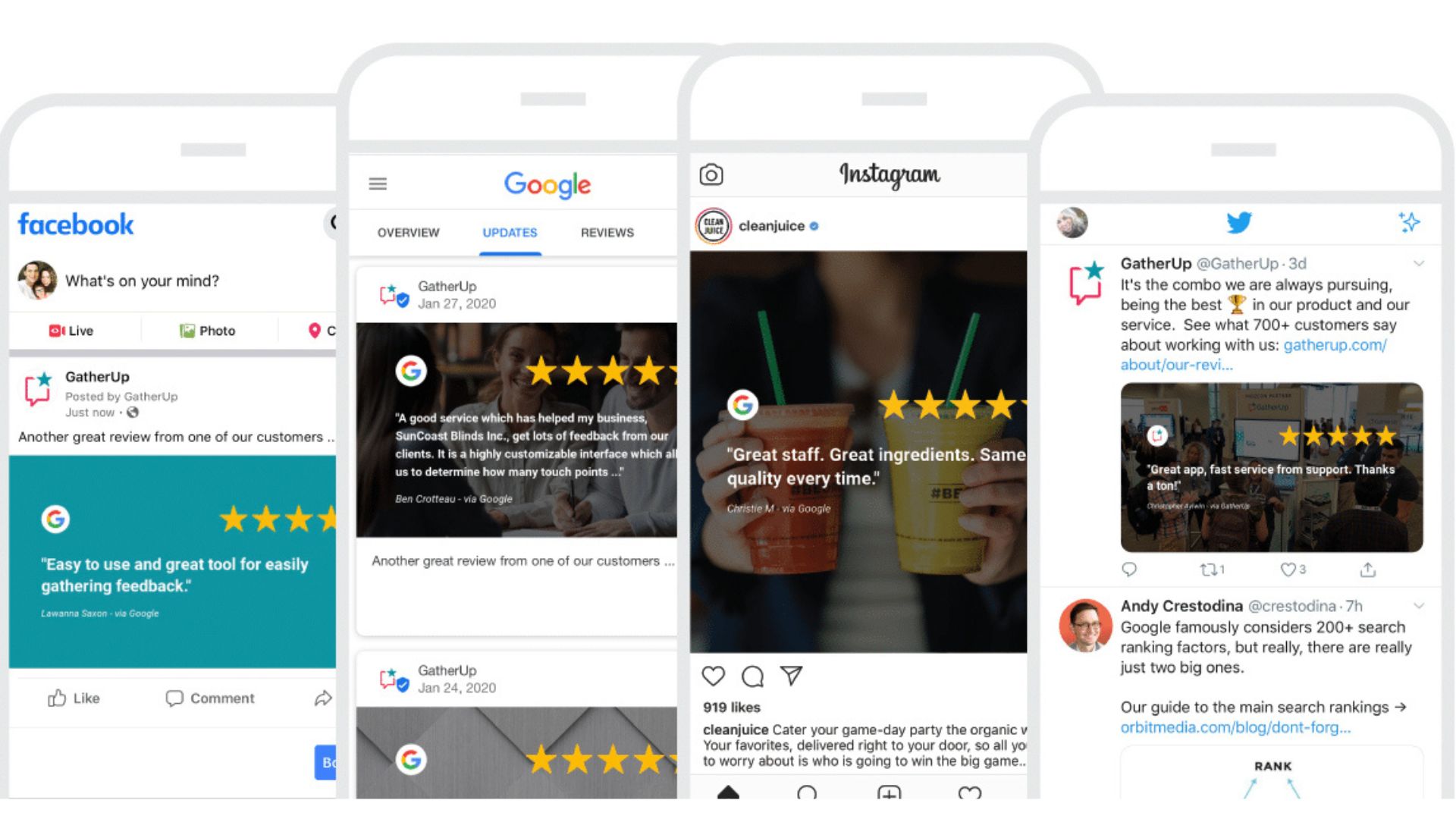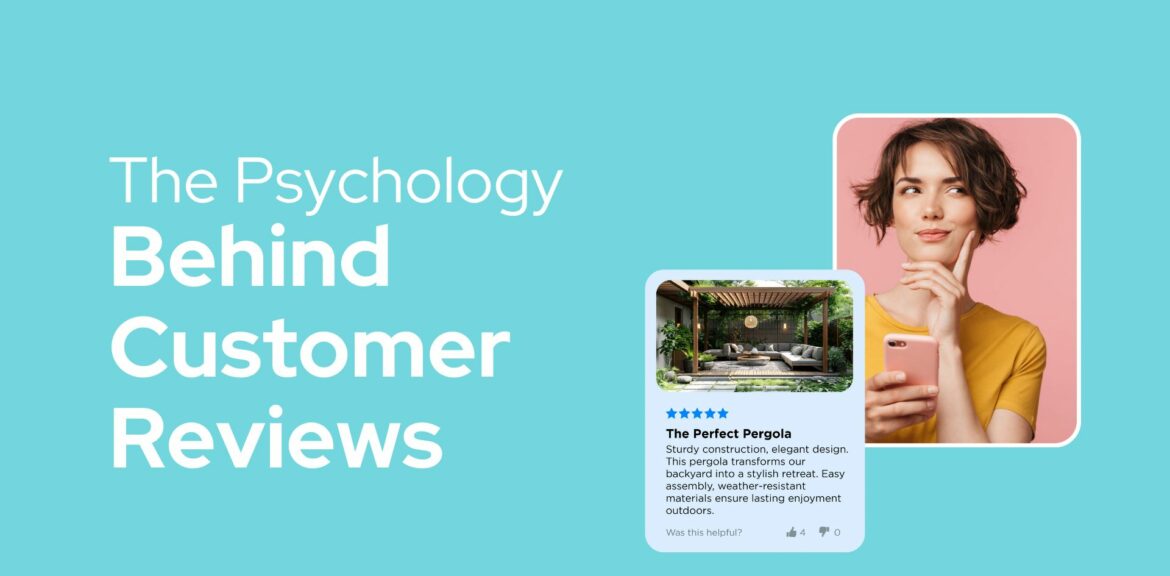Google vs. Facebook Reviews: Which Matters More for Your Business?
As you know, customer reviews can make or break a business. But with so many platforms available, it’s normal to wonder: Should I focus more on Google reviews or Facebook reviews? Which one really drives more visibility, trust, and ultimately, sales?
The short answer? Both matter—but for different reasons.
In this blog post, we’ll break down the key differences between Google and Facebook reviews, explore how they impact your business, and help you decide where to focus your energy. By the end, you’ll have a clear strategy to build trust, boost visibility, and grow your business with confidence.
The Importance of Customer Reviews

Customer reviews are no longer optional—they're essential. According to BrightLocal’s latest survey, 93% of consumers read online reviews before buying from a local business. And platforms like Google and Facebook are leading the charge.
Positive reviews:
-
Improve trust and credibility
-
Influence purchasing decisions
-
Help your business rank higher in search results
-
Provide valuable feedback for improvement
But not all review platforms are created equal.
Google Reviews: Visibility Meets Credibility

1. Boosts Search Engine Rankings
Google reviews have a direct impact on your business's local SEO. Reviews influence your ranking in Google’s local search results (also called the “Local Pack")—those coveted top spots under the map.
Pro Tip: Google favours businesses with a high number of recent, positive reviews.
2. Increases Click-Through Rates (CTR)
A strong star rating next to your business in Google search results increases your chances of getting clicks. Higher CTR = better SEO = more traffic.
3. Appears on Google Maps
When customers search for businesses “near me,” Google Maps plays a major role. Reviews influence whether you show up at all—and where.
4. Builds Trust Instantly
When people Google your business, reviews are one of the first things they see. A steady stream of authentic reviews shows you're active, trusted, and worth choosing.
Facebook Reviews: Social Proof Meets Engagement

1. Connects with Your Community
Facebook reviews (also called “Recommendations”) are part of your public business profile. They provide social proof and are easily visible to people in your network or those browsing your page.
2. Boosts Visibility in Social Feeds
When someone recommends your business on Facebook, it can show up in their friends’ feeds, creating a ripple effect. This is powerful word-of-mouth marketing in action.
3. Encourages Interaction
Unlike Google, Facebook allows two-way engagement. You can reply, tag, share, and even turn positive reviews into promotional posts.
4. Helps You Stay Top of Mind
With Facebook’s vast audience and regular user engagement, your reviews can reach new eyes without people even searching for you.
Key Differences: Google Reviews vs. Facebook Reviews

So… Which Reviews Matter More?
If visibility on Google Search and Maps is your priority (which it should be), Google reviews are non-negotiable.
But if community engagement, social proof, and brand personality are important to you, Facebook reviews should not be ignored.
Here’s the best approach: Use both strategically.
-
Focus on getting Google reviews to boost search rankings and win over new customers
-
Use Facebook reviews to build community trust and amplify social engagement
And if managing reviews on multiple platforms feels overwhelming? That’s where tools like Reviewr come in—making it simple to collect, manage, and showcase all your reviews in one place.
FAQs

Q: Can reviews from Facebook show up in Google search?
A: Not directly. While your Facebook page might appear in results, the individual reviews don’t influence your Google ranking.
Q: Should I respond to Facebook reviews like I do with Google reviews?
A: Absolutely. Engagement is key to building trust, no matter the platform.
Q: Is one platform better for B2B vs B2C?
A: Google reviews are better across both. But Facebook tends to be more effective for B2C brands looking to foster community.
Google vs. Facebook reviews—both have their place in your marketing toolbox. The key is to know when and how to use them. Google gets you found. Facebook keeps you connected.
Ready to make review management easy?
👉 Start your FREE trial with Reviewr and manage all your reviews in one simple, powerful dashboard.
Have thoughts or experiences with Facebook and Google reviews? Share them in the comments below—we’d love to hear your take!
















































